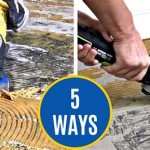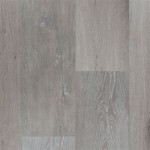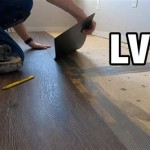Will Acetone Remove Paint From Vinyl Flooring?
Dealing with paint spills on vinyl flooring can be a frustrating experience. Vinyl, while durable and resilient, is susceptible to damage from harsh chemicals. One common household solvent often considered for paint removal is acetone. This article explores the effectiveness and potential risks of using acetone to remove paint from vinyl flooring.
Understanding Acetone and its Effects
Acetone is a powerful solvent known for its ability to dissolve various substances, including certain types of paint. It works by breaking down the molecular structure of the paint, allowing it to be wiped away. While effective on some surfaces, acetone's potent nature poses a risk to vinyl flooring. Vinyl is composed of polyvinyl chloride (PVC), a plastic material that can be softened and even dissolved by strong solvents like acetone.
The impact of acetone on vinyl depends on several factors, including the concentration of the acetone, the type of vinyl flooring, and the duration of exposure. High concentrations of acetone are more likely to cause damage, while prolonged exposure can lead to discoloration, warping, or even dissolving of the vinyl. Even a brief exposure can dull the finish, leaving a noticeable blemish.
Risks of Using Acetone on Vinyl Flooring
Using acetone on vinyl flooring carries significant risks. The primary concern is the potential for damage to the vinyl itself. Acetone can dissolve the plasticizers in the vinyl, leading to a softened, sticky, or gummy surface. This damage can be irreversible and necessitate replacing the affected flooring sections.
Another risk is discoloration. Acetone can strip away the protective top layer of the vinyl, altering its color or leaving a dull, hazy appearance. Furthermore, some vinyl flooring types incorporate printed patterns. Acetone can dissolve or smear these patterns, resulting in permanent aesthetic damage.
Finally, the strong fumes produced by acetone pose a health hazard. Adequate ventilation is essential when working with acetone in any capacity, and prolonged exposure should be avoided.
Safer Alternatives for Paint Removal
Given the risks associated with acetone, exploring safer alternatives for paint removal from vinyl flooring is crucial. Several gentler methods can effectively remove paint without compromising the integrity of the vinyl.
One option is to use a scraper, preferably a plastic one to avoid scratching the vinyl. For dried paint spills, gently scraping can often lift the paint without damaging the flooring. Another method involves warm water and a mild dish soap. Soaking a cloth in this solution and applying it to the paint can soften it, making it easier to wipe away. Patience is key with this method, as it may require multiple applications.
Specialized vinyl flooring cleaners are available on the market and are designed to be gentle yet effective in removing stains and spills, including some types of paint. Always follow the manufacturer's instructions when using these products.
For stubborn paint stains, a rubbing alcohol solution (isopropyl alcohol diluted with water) can be considered. Test this solution in an inconspicuous area first to ensure it doesn't damage the vinyl. Apply the solution with a cloth and gently rub the affected area. Avoid excessive scrubbing, which could scratch the flooring.
Testing and Precautions
Before attempting any paint removal method, especially if using a chemical solvent, it's crucial to test it in an inconspicuous area. This allows you to observe any potential adverse effects on the vinyl without risking damage to a visible area. Apply a small amount of the chosen solution to a hidden spot, such as under a piece of furniture, and wait for several minutes. Check for any discoloration, softening, or other changes to the vinyl. If no negative effects are observed, proceed with caution on the affected area.
Regardless of the chosen method, protect the surrounding area by covering it with drop cloths or plastic sheeting. This prevents accidental damage or staining to adjacent flooring or furniture. Always ensure adequate ventilation when working with any cleaning agents or solvents.
Professional Assistance
If the paint spill is extensive or the stain proves particularly stubborn, seeking professional assistance is recommended. Professional cleaning services possess the expertise and specialized equipment to handle paint removal safely and effectively, minimizing the risk of damage to your vinyl flooring. They can also assess the type of vinyl and recommend the most appropriate cleaning method.
Ultimately, the decision of whether to use acetone on vinyl flooring requires careful consideration of the risks involved. While effective in dissolving paint, the potential for damage to the vinyl often outweighs the benefits. Exploring gentler, safer alternatives and taking appropriate precautions can help ensure the longevity and appearance of your vinyl flooring.

How To Get Paint Off Vinyl Floor Completely 3 Easy Methods

How To Get Paint Off Vinyl Floor In 8 Easy Ways Furnish My Place

How To Get Paint Off Vinyl Floor In 8 Easy Ways Furnish My Place

How To Remove Paint From Vinyl At Home

How To Get Paint Off Vinyl Flooring Wildfire Interiors

How To Clean Up Paint Spills On Carpet Hardwood Or Laminate

How To Remove Paint From Vinyl At Home

How To Get Paint Off Vinyl Floor Completely 3 Easy Methods

How To Remove Paint From Vinyl At Home

Using Acetone On Vinyl Flooring Dos And Don Ts Tiktok
See Also







